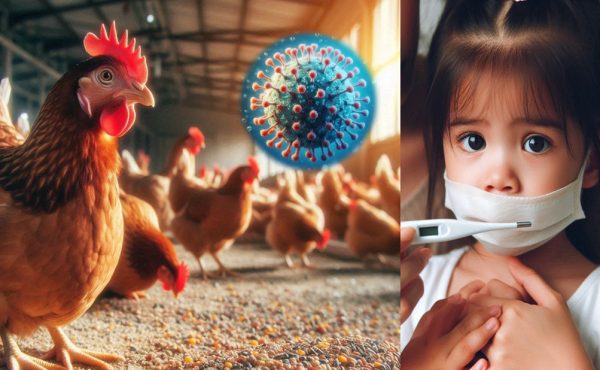
Four Year Old Infected With Bird Flu In India
Recently, the International Health Regulations (IHR) National Focal Point (NFP) for India reported to WHO a case of human infection with avian influenza A(H9N2) virus detected in a child resident of West Bengal in India. Child has been recovered and sent home.
WHO expressed deep concern regarding the increasing transmission of H5N1 bird flu to other species, including humans.
This is the second human infection of avian influenza A(H9N2) notified to WHO from India, with the first in 2019. The child has recovered and was discharged from hospital.
According to the IHR (2005), a human infection caused by a novel influenza A virus subtype is an event that has the potential for high public health impact and must be notified to the WHO. Most human cases of infection with avian influenza A(H9N2) viruses are exposed to the virus through contact with infected poultry or contaminated environments.
Avian influenza A (H9N2) is a subtype of influenza A virus that primarily affects birds, including poultry like chickens and turkeys. Occasionally, it can infect humans and other mammals. Here is a general overview of Avian Influenza A (H9N2) and its situation in India:
Avian Influenza A (H9N2) Overview:
· Virus Type: Avian influenza A (H9N2) is a type of influenza A virus commonly found in birds, particularly poultry.
· Transmission: It primarily spreads among birds through respiratory secretions and fecal contamination. Human infections are rare and usually occur after direct contact with infected birds.
· Symptoms in Birds: Infected birds may show symptoms like reduced egg production, respiratory issues, and sometimes mortality, although many infected birds show no symptoms.
· Human Infections: Human infections with H9N2 are generally mild, causing symptoms like seasonal flu -fever, cough, sore throat, headache, muscle aches, fatigue, and conjunctivitis and rarely severe during which breathing can be hard and pneumonia can occur.
· Detection: Swabs of throat and nose followed by series of tests including RT-PCR will help to identify the virus. Serological studies including blood tests will help to identify the antibodies against the virus is essential for determining immune responses and any verifying prior infections of bird flu.
Avian Influenza A (H9N2) in India:
As stated by WHO this is the 2nd bird flu case in India, the first one was reported in 2019. According to Dr. Saurabh Khanna, Lead Consultant, Pediatrics and Neonatology at CK Birla Hospital – “While H9N2 virus primarily infects birds, it can occasionally infect humans, including children”. The risk of getting bird flu is comparatively low unless children come in contact with a contaminated environment, infected birds, animals, or their secretions. Children are more susceptible to this virus as their immune system will be in development stage unlike adults who have more resistance to the infection. Both in adults and children symptoms remain same, severity of infection will be different.
· Occurrence: H9N2 has been detected in poultry in India, but human cases are uncommon.
· Surveillance: The Indian government conducts surveillance and monitoring of influenza viruses in poultry populations to detect any potential outbreaks or transmissions to humans.
· Prevention and Control: Measures such as vaccination of poultry, biosecurity measures on farms, and restrictions on poultry movement are implemented to control the spread of H9N2 and other avian influenza viruses.
· Public Health Response: Public health authorities in India, like in other countries, emphasize monitoring and rapid response to potential outbreaks to prevent human infections and ensure food safety.
While Avian Influenza A (H9N2) is present in poultry in India, human infections are rare and typically mild. H9N2 is not easily transmitted between humans. However, surveillance and control measures are crucial in managing the virus and minimizing its impact on both animal and human health.
References:
· Avian Influenza A (H9N2)- India (who.int)
· https://indianexpress.com/
· https://www.businesstoday.in/
· Image credit: Copilot: Generated with AI ∙ June 24, 2024 at 7:32 & 7:39 pm
Author: Sumana Rao | Posted on: June 25, 2024
« Illness Potentially Associated with Consuming Diamond ShruumzTM Brand Chocolate Bars, Cones, and Gummies -CDC Warning Facts About Ashwagandha The Stress Buster Indian Ginseng »




















Write a comment